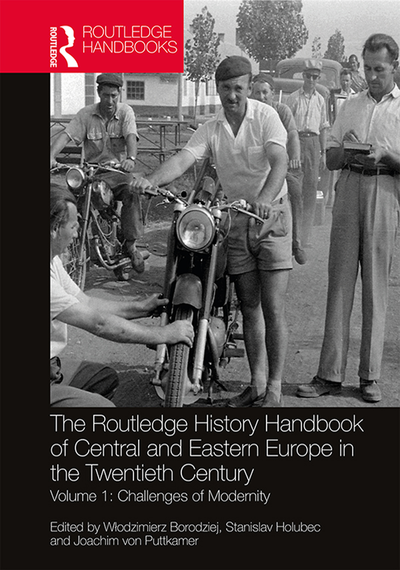What were the central twentieth-century experiences for Eastern European societies? Depending on whom you ask and depending on which country their thoughts intuitively drift towards, the answer is likely to be quite different. The answer could refer to significant dates, such as the 1939 Molotov-Ribbentrop Pact, the 1956 Hungarian uprising, the Prague Spring of 1968 or the year of Solidarity in 1980–1981. It could also revolve around the experiences in various countries – the Stalinist deportations left deep scars in the Baltic states, as did the wars of the 1990s in former Yugoslavia. The thoughts of a Western European are likely to jump to 1989 and the collapse of communist rule – perhaps also to the disappointed (or at least unlikely) prospects of a unified Europe. Hopefully, he or she might learn something from this volume. As that Western European will discover, there were particular as well as shared experiences. The volumes presented here focus on both, grouped around what the editors regard as central, overarching themes. To emphasize the experience of War, Violence and Oppression (vol. 4) is just as obvious as prioritizing the manifold Challenges of Modernity (vol. 1) of a region that has often been described – and perceived by its own inhabitants – as the periphery of Europe. The need to address the transformation of Statehood (vol. 2) over the course of the century may initially seem less apparent, but it allows for an elucidation of profound changes and phenomena that are otherwise obscured in a discussion of the emergence and emancipation of modern nation-states. Intellectual Horizons (vol. 3) reflects the wealth of self-descriptions and self-localizations in and about the region.
What do these volumes offer the reader? Not an encyclopaedia of Central, Eastern and Southeastern Europe in the long twentieth century, but a series of essays written from different perspectives and life experiences. The authors live in Bulgaria, Germany, Canada, Austria, Poland, Romania, Serbia, Czechia, Hungary and the United States. They belong to different generations and milieus and often have vastly different conceptions of historiography and the writing of history. Therein lies – according to the editors – the appeal of these volumes.
The shared goal of these contributions is to tell the story of the ‘suburbs’ of Europe in the twentieth century; to tell how the story unfolded, how it was perceived within this region and how it can be interpreted today.
The authors were not given any methodological parameters to follow. Some contributions may seem conservative or even old-fashioned; others argue in the spirit of what, in many universities today, is considered mainstream. None of the authors, however, crosses the boundary beyond which they see traditional sources as nothing more than merely conceptual obstacles. If the present volumes provide a new impetus for a collective reflection on Eastern Europe, both in teaching and in research, then much will have been gained.

The Routledge Twentieth Century History Handbooks
This volume focuses on central questions such as: How did the various aspects of modernity manifest themselves in the region, and what were their limits? How was the multifaceted transition from a mainly agrarian to an industrial and post-industrial society experienced and perceived by historical subjects? Did Central and Eastern Europe in fact approximate its dream of modernity in the twentieth century despite all the reversals, detours and third-way visions? Structured chronologically and taking a comparative approach, a range of international contributors combine a focus on the overarching problems of the region with a discussion of individual countries and societies, offering the reader a comprehensive, nuanced survey of the social and economic history of this complex region in the recent past.
The first in a four-volume set on Central and Eastern Europe in the twentieth century, it is the go-to resource for those interested in the ‘challenges of modernity‘ faced by this dynamic region.